Ja, wir kochen weiter auf Deutsch! If you haven’t already mastered the fine art of cooking Bratwurst in beer, you may want to brush up on that. Of course, perhaps you already have that skill down to the point that you could do it in your sleep except for the fact that you can’t sleep because you’re plagued by the uncertainty of what to serve alongside such a fine Bratwurst. Perhaps you’re a vegetarian and seek a non-meat alternative oriented toward both the bourgeois and fine palates. Or perhaps you’re curious about what sorts of vegetables German-speaking people liked to eat in the year 1901. Well fear not, for the answer to all of those questions and more begins right here, after the end of this sentence which introduces recipe number 697 from L. Kurth’s Illustriertes Kochbuch: Junge Mohrrüben.
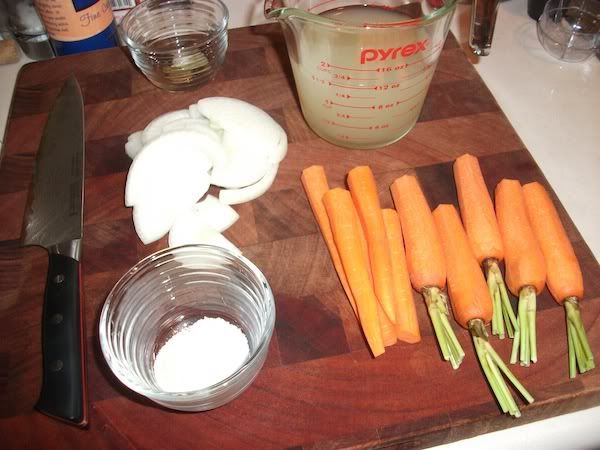
Prep items for the carrots join the previous assembly of items for the Brats. As per Kurth’s instructions, “man kann, um ihnen [die Mohrrüben] ein zierliches Aussehen zu geben, eine ganz kleine Spitze von dem grünen Kraut stehen lassen.”
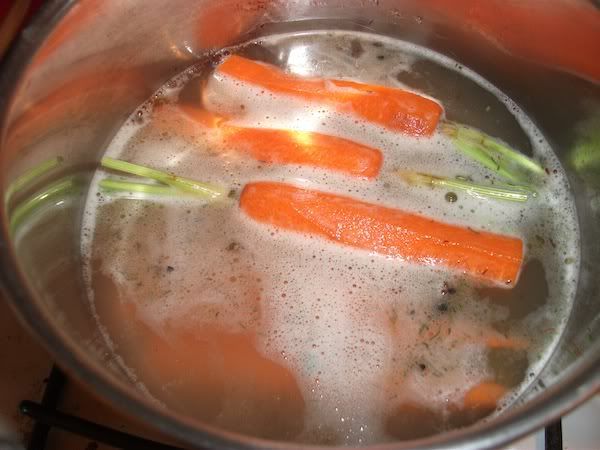
[Man] kocht sie mit Bouillon, einem Stück Zucker, Butter und Salz rasch weich…
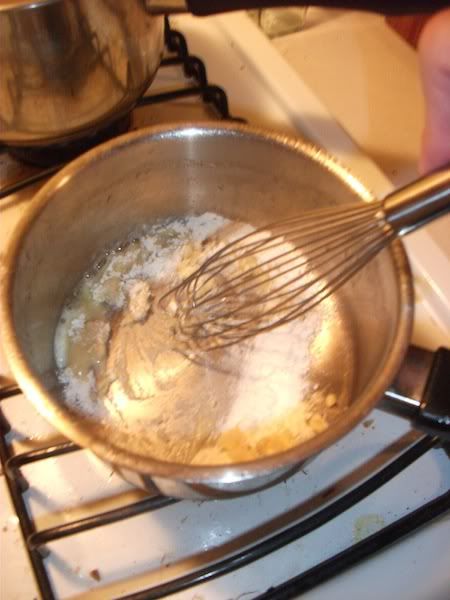
… schwitzt etwas Mehl in Butter…
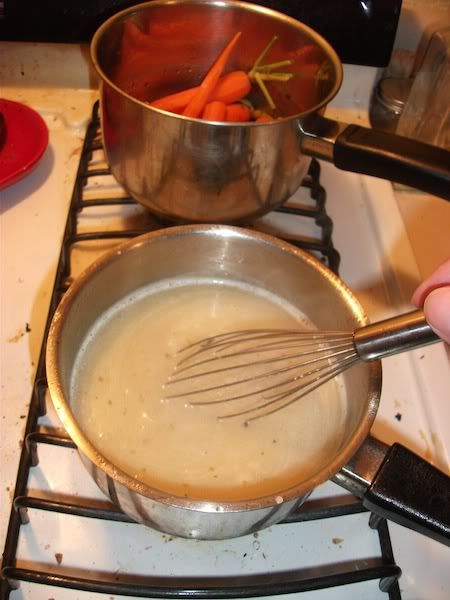
… rührt es mit der Mohrrübenbrühe klar, kocht davon eine seimige Sauce…
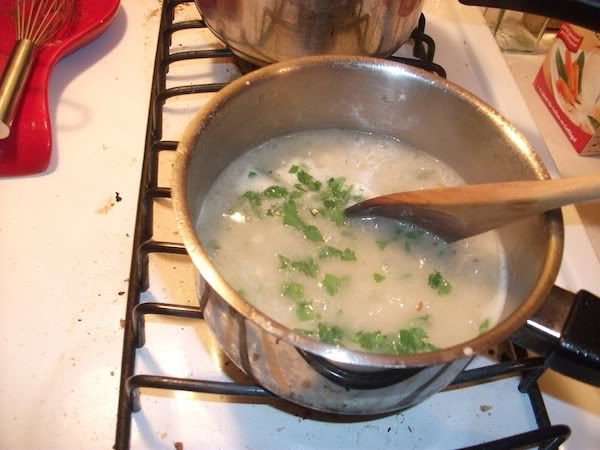
… mischt diese mit gehackter Petersilie…
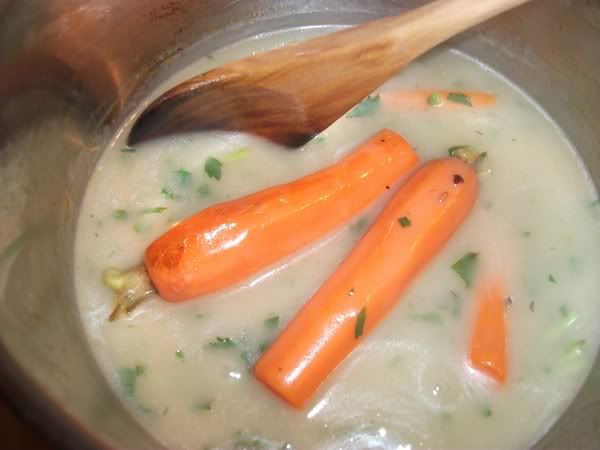
… und schwenkt sie mit den Mohrrüben durch.
I have to say, this recipe is so incredibly old-school German that after one taste I immediately began to doubt the fact that *I* had just cooked these carrots, since it seemed much more likely that my Oma had somehow returned from the grave and prepared this dish herself.
And so we come to the final result:

Here I opted to serve the brats and carrots together, along with a pickle and some potato salad. Kurth recommends serving the Brats with either roasted, boiled or mashed potatoes, and I see the merit in this–next time I would go with that option as well, since the gravy that gets made with the brats would lend itself better to a simpler side.
As for the carrots, Kurth recommends either an omelet or fried egg as an accompaniment, or alternatively says that they can serve as a side with any of the same things that the peas can. This required some work to discover where exactly the pea recipe was located in the book, but once it was found, it quickly became clear that peas and carrots apparently go with anything. Whether you’re serving pork, lamb, chicken, sausage (hence combining the carrots and brats on the same plate here), french toast, milk pudding (yes, you read those last two correctly) or smoked eel, you just can’t go wrong with peas or carrots. Or at least you can’t go wrong if you’re serving middle-class Germans from two turns of the century ago. So now if zombie Kaiser Wilhelm ever shows up at your door one night, you’ll be prepared to offer him something much more pleasant than your brains for supper!

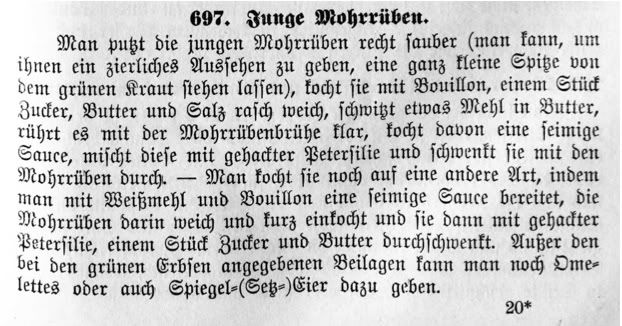
[…] Learn German by Cooking pt.2! Lüttje Lage, or “This beer isn’t getting me drunk and I need to fix that […]
Ich gebe zu…ich habe gesabbert. Und will jetzt Möhren (aber mit einer großen Spitze Kraut).
Ich weiß ja nicht (wääß joo net!), was mir mehr fehlt…du oder dein Kochen!